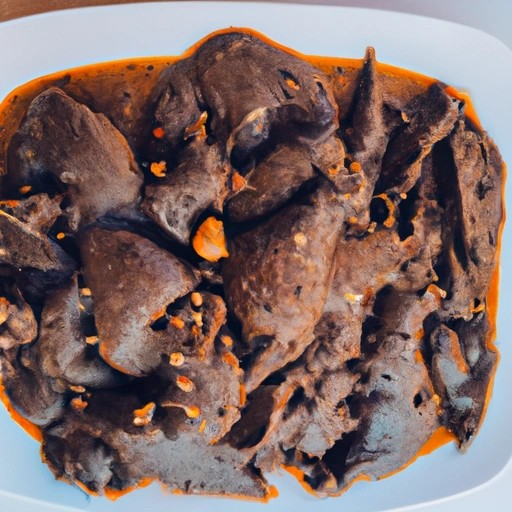Tongue
Description

Tongue is a unique and traditional ingredient found in various cuisines around the world. Often sourced from cows or pigs, it is a type of offal or organ meat that has been savored for centuries for its rich flavor and tender texture after proper preparation and cooking. In culinary circles, tongue is appreciated for its versatility and can be used in a range of dishes from cold cuts to hearty stews.
Common uses
Traditionally, tongue is used in cold cuts, sandwiches, stews, and as a standalone dish. It is often pickled, smoked, or incorporated into dishes with rich sauces and spices which complement its distinct flavor.
Nutritional value
Calories
On average, 100 grams of cooked beef tongue contains about 224 to 290 calories (American) or 935 to 1,213 kilojoules (European/Azjan).
Protein
Beef tongue is a good source of protein, providing about 15 to 20 grams per 3.5 ounces (100 grams).
Fat
It is relatively high in fat, with 15 to 25 grams of fat per 100 grams, including both saturated and unsaturated fats.
Carbohydrates
Tongue is low in carbohydrates, with less than 1 gram per 100 grams.
Vitamins
It is rich in certain vitamins, particularly B-vitamins such as B12, niacin, and riboflavin.
Minerals
The tongue also provides essential minerals, including zinc, iron, phosphorus, and selenium.
Health benefits
As a rich source of protein and B-vitamins, tongue can support muscle repair and maintenance as well as contribute to overall energy levels and metabolic health. The minerals found in tongue, such as zinc and iron, play crucial roles in immune function and oxygen transportation in the blood.
Potential risks
Due to its high fat content, particularly saturated fat, excessive consumption of tongue might increase the risk of heart disease. Also, as with other types of offal, there is a risk of contamination with harmful bacteria or toxins if not properly sourced or cooked.
Common recipes
Recipes including tongue range from the classic Mexican 'tacos de lengua' to the traditional Jewish dish of pickled tongue. It is also found in Russian 'beef tongue in mustard sauce' and as 'smoked tongue' in various European cuisines.
Cooking methods
Common methods of preparing tongue include boiling, braising, grilling, and pickling. It is essential to cook tongue thoroughly and often involves removing the outer layer of skin after cooking to achieve the desired texture and taste.
Pairing with other ingredients
Tongue pairs well with robust flavors such as mustard, horseradish, and onions. It is also complemented by acidic elements like pickles or a squeeze of lemon to balance the richness.
Summary
Tongue is a nutritious and flavorful ingredient that has been part of human diets for centuries. With proper preparation and cooking, it can be a delicious addition to a variety of dishes, bringing a unique texture and taste to the culinary experience.